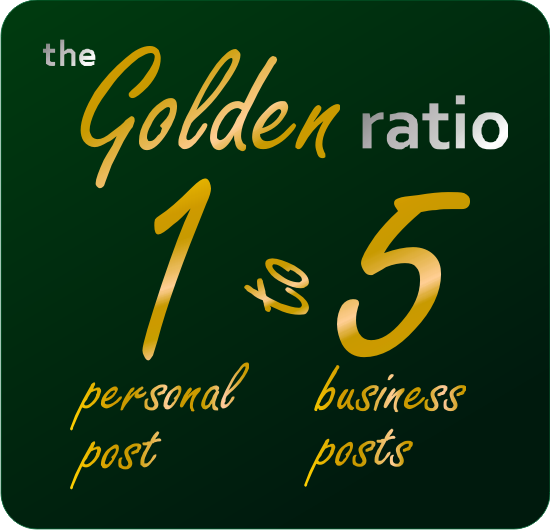 Social media marketing
Social media marketing has been around for a very long time.
What is to
B2B social media is the largest demographic can only be found there. Traditional marketing outlets like newspapers, television and sometimes magazines are not the common place for Generation Y or millennials hang. Business blogging has to adapt to the way they now consume information. Challenge is figuring out what Social Media networks you should join.
There are literally thousands of social networks out there. You can’t join them all, nor would you want to.
So, which ones should you join?
When you spread yourself too thin over too many networks, you run the risk of being unable to properly maintain your presence on all these channels. You could also find yourself associated with a social network that has a lame image or that disappears as quickly as it appeared.
How do you prioritize? Easy…
Fish where the fish are. Go where the users are. Just like a blog with no comments or a message board with no posts, a social network with no users has little value. This seems obvious but is often ignored because many less experienced marketers decide to place all their chips on a little used "up and comer" hoping to be on top when the masses convert to that social network. Problem is, the conversion rarely happens.
Social networking sites like Facebook, MySpace, LinkedIn and Twitter have millions of active users. While, many “gurus” might scoff at marketing on these well established social networks, don’t be persuaded. Usually, these guys are trying to point you away from the obvious in a clever attempt to sell you some unconventional “wisdom”. Go for the safe bets because people are there, actively participate in what is a massive marketing opportunity for your brand.
With that said, there are situation when some major players should be avoided and opportunities in the new or lesser known communities... if you know what to look for. And yes, choosing the right social networks to join goes way beyond user numbers – here are a number of other factors you’ll also want to consider…
Step One: Choosing Social Networks
Site Credibility and Reputation
If you’re a Fortune500 CEO you really have no place putting yourself on MySpace (unless you happen to run a company where the target market is teens). A site may have a million users, but if they’re not your market then it’s not worth going there.
For example, think about a marketing consultant. He’s going to get more contacts and worthwhile links from maintaining his LinkedIn, Facebook and even Twitter accounts. But, he probably won’t see any returns from investing hours of time into his
MyDogSpace account (a social networking site for dog lovers).
However, if he can build a presence on
StartUpNation, he could get tons of great small biz consulting work form a relatively small network.
Ask if it’s Relevant?
Of course, another type of consultant could be barking up the right tree setting up a profile on MyDogSpace.com if he happens to provide consulting service for dog breeders and trainers. Why? Because the other users on that site are relevant, they fit into his niche. Obviously, right! Then why don’t more folks find these social networks and engage?
The Site’s PageRank
Despite what some say, we feel that PageRank is still critical to improving and controlling your Google (and other) search engine rankings. That means, if possible, you want to sign up for and invest your time on social networks that have a high PageRank value with lots of visitors.
For example, try googling the names of some of your friends. You’ll often find that if they have a LinkedIn, Twitter or even Blogger account, these profiles will be on the first page of their Google results. That’s because these sites have significant PageRank (6 or higher).
The Site’s Staying Power
If you don’t think a social network has staying power or enough users to keep it running through this rough economic storm, don’t waste your time setting up a profile and building up a community.
Being an early adopter can pay dividends, but then again you may just be wasting your time. If you go with a new social network, do so only if your gut tells you it is unique or compelling enough to be around in a year.
Make a Social Network Checklist
Before you invest hours of time into developing an online profile for yourself or your business, run a potential social network through a personal checklist. Ask questions like does it fit my niche? Are my current contacts using this site? Are there groups the site that I could join? How many users does it have? What’s the PageRank? Will joining this site benefit or hinder my brand?
Think of Every Profile as an Introduction
First impressions are important, so you want to avoid spreading your brand too thin. Ideally, you want every social network profile that you or your business has to be up-to-date and functional. Nothing says “deadbeat” like a profile that hasn’t been updated since 2006 or at least deleted.
You should also think of every social profile as a potential first introduction, the first handshake with a new acquaintance. Is it limp or firm and steady?
Each profile may be a bit different, but you want them all to put forward the image and information that is congruent with your brand or blog.
 Looking for that Time Machine? Social media can give it to you.
Looking for that Time Machine? Social media can give it to you.






 If you want to go off-topic, keep those personal posts to about 15-25% or no more than one in five posts. Oh, and make sure you try to keep those off topic, personal posts on topic.
If you want to go off-topic, keep those personal posts to about 15-25% or no more than one in five posts. Oh, and make sure you try to keep those off topic, personal posts on topic. In the meantime, party with us on Twitter:
In the meantime, party with us on Twitter:






 Search your name: you’ll find social networks and social news sites own it.
Search your name: you’ll find social networks and social news sites own it.